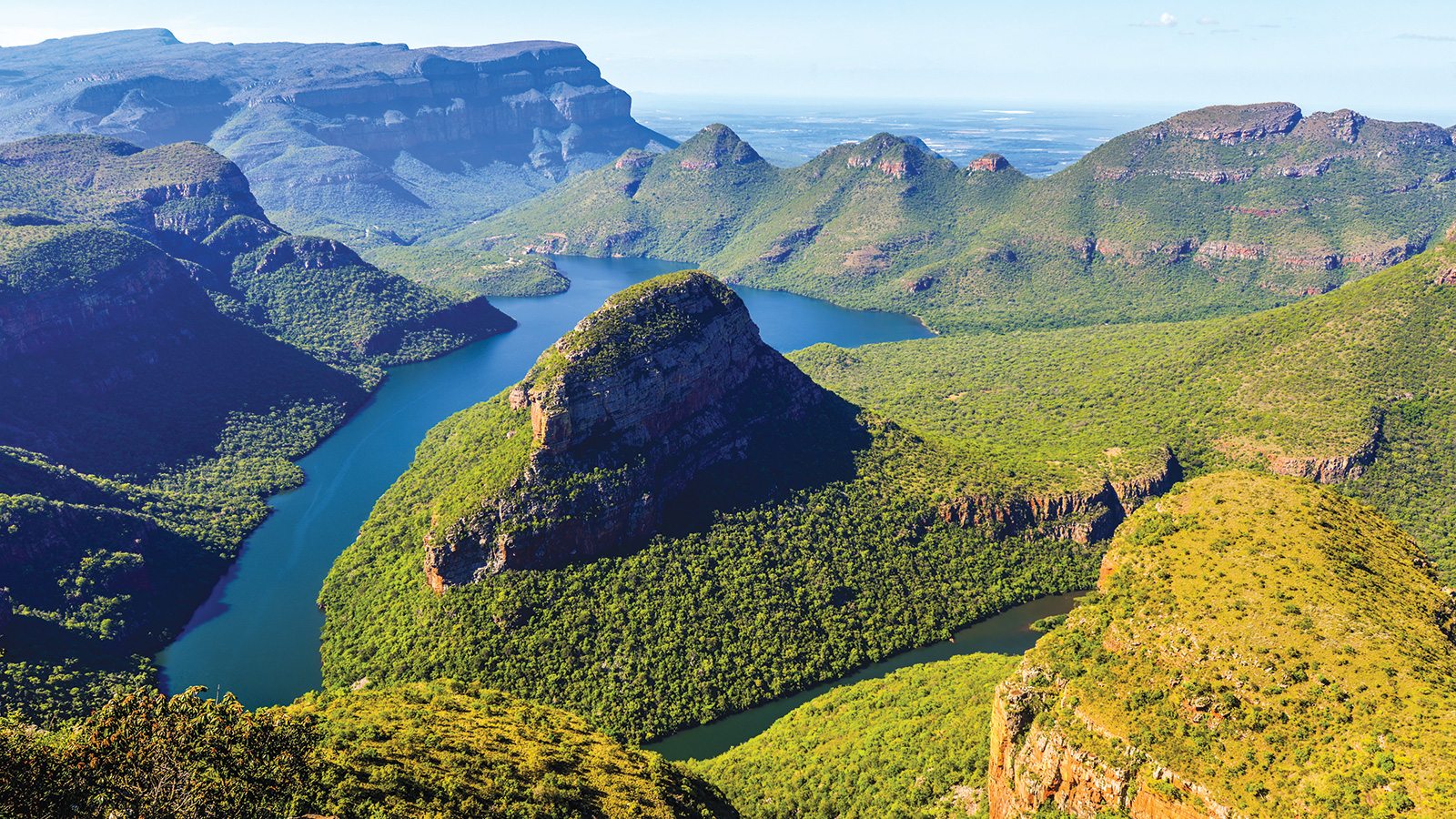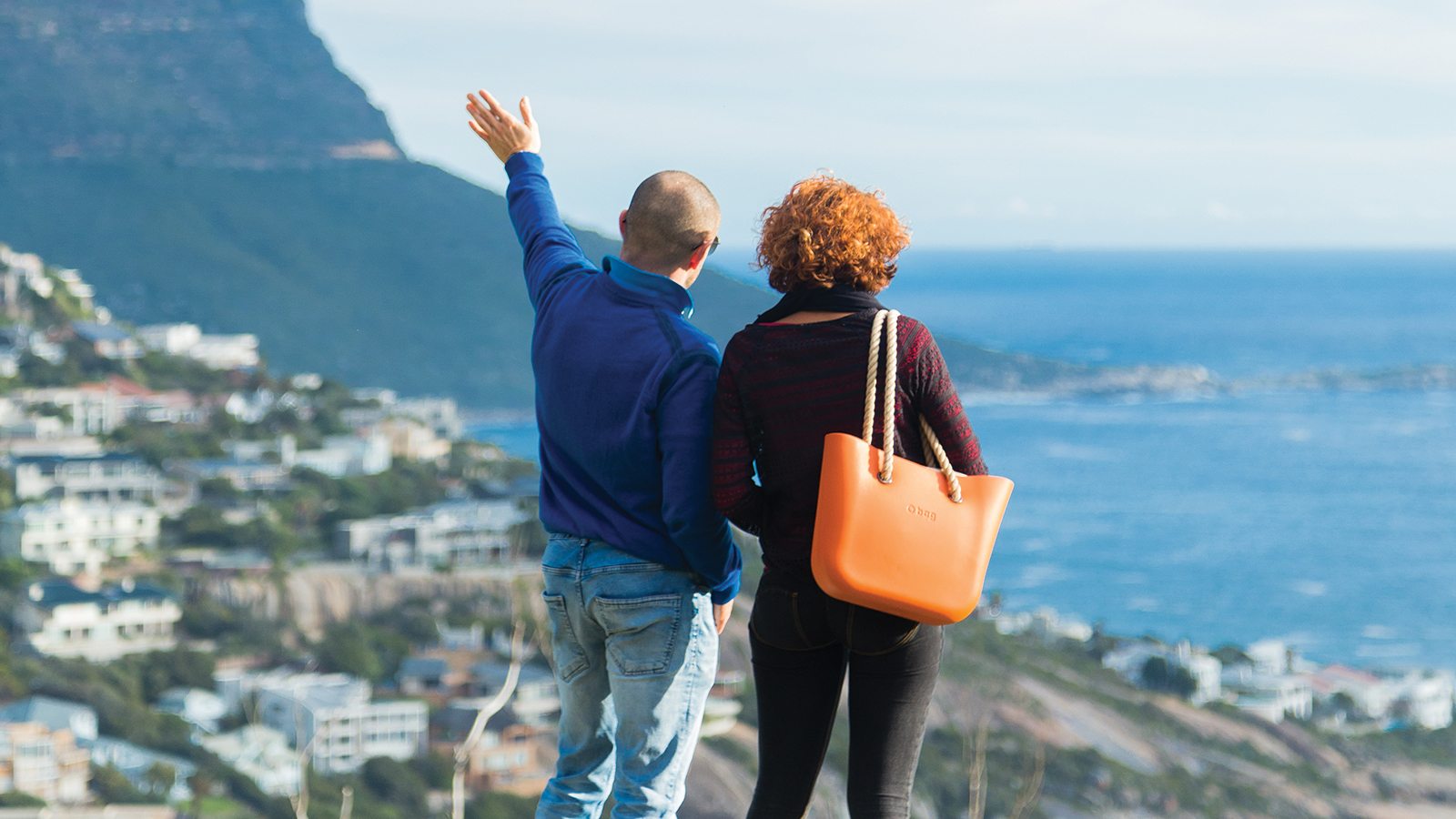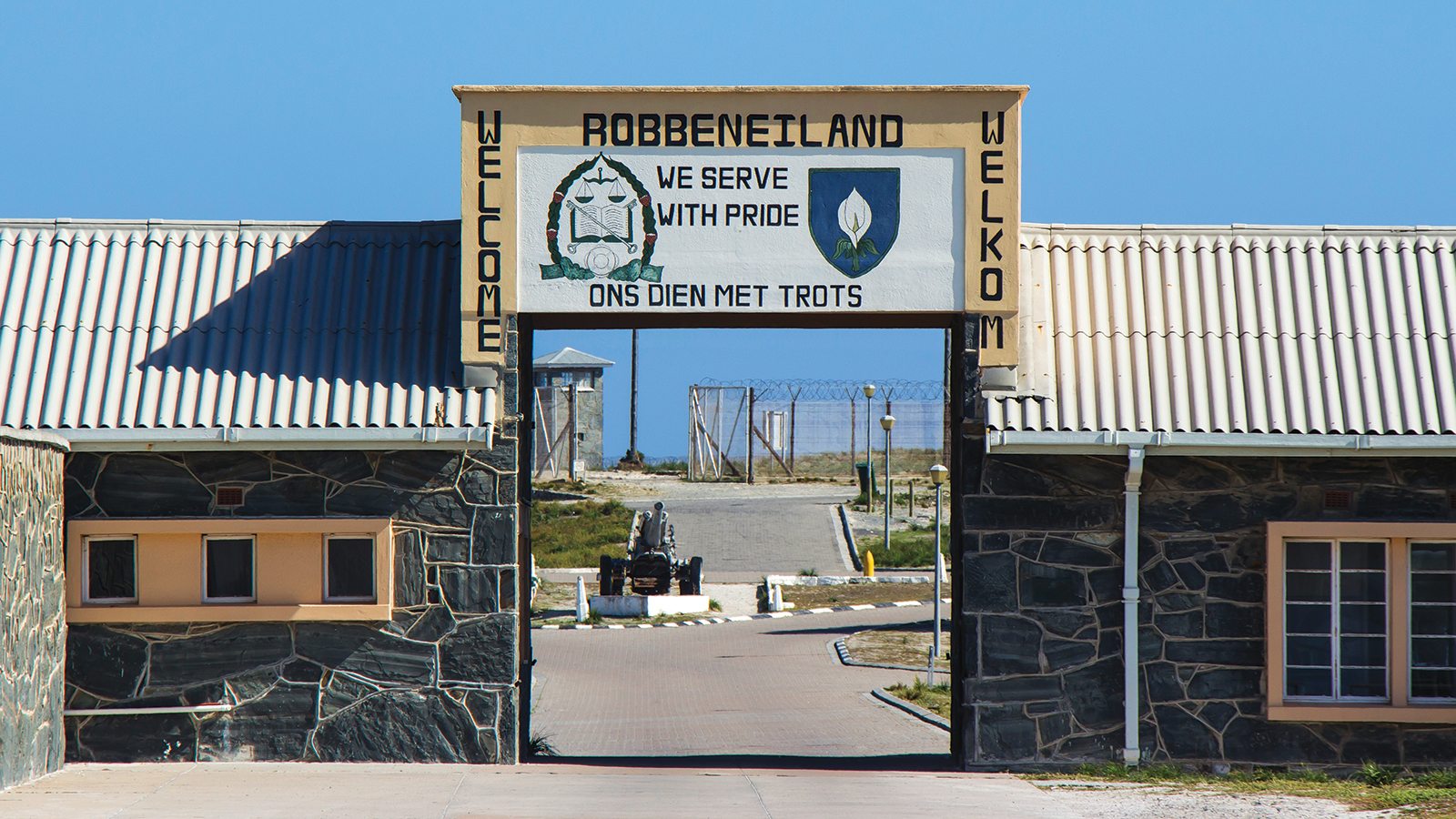Spend any length of time in South Africa and eventually you’ll take note of the friendly rivalry that exists between its two largest cities. Johannesburg, in the country’s northeast, has a rough-and-tumble reputation, but is now a fast-evolving urban centre. Coastal Cape Town is more typically beautiful, nestled between flat-topped Table Mountain and the shores of the South Atlantic. Whether you visit one or both cities, you’ll find countless historic sites, cultural attractions and unique neighbourhoods—not to mention proximity to amazing wildlife—that showcase South Africa’s challenging past and bright future.
JOHANNESBURG: CULTURAL MEGACITY
Founded as a gold town in the 19th century, Johannesburg still relies on mining, as well as financial services and government, to support its population of nearly eight million. The sprawling metropolis has endured significant growing pains over the past two decades, but an urban renaissance has reinvented the downtown core and fostered investment in arts and culture.
The Apartheid Museum is just one example of renewal. Upon arrival you’re given a ticket randomly marked blankes (Afrikaans for whites) or nie-blankes (non-whites) and shown to the corresponding, separate entrance for that group—a stark demonstration of the system of racial segregation that was a reality in South Africa from 1948 to 1994. Inside, interactive exhibits broadcast the country’s colonial past, the effects of decades of apartheid and steps that led to its eventual demise. Some of the simplest displays are the most powerful: A video of a defiant young Nelson Mandela explaining his anti-apartheid views; a room with 131 nooses representing political prisoners executed by the government.
Similarly harrowing is Constitution Hill, once a prison whose inmates included Mandela himself as well as Mahatma Gandhi. The building is now the country’s Constitutional Court, remodeled in 2004 with many windows to ensure a transparent view of justice. Visitors can see former prison cells and peruse exhibits detailing the country’s legal path from apartheid to post-apartheid.
In the time since apartheid’s end, sports have played a significant role in unifying South Africa’s diverse peoples. In Johannesburg, you’ll be hard-pressed to miss iconic monuments like FNB Stadium—expanded for the 2010 World Cup, “Soccer City” is home to Bafana Bafana, the national team—or Ellis Park Stadium, which hosts the Springboks, South Africa’s rugby union squad and symbol of national pride. It was on this hallowed ground that South Africa hosted (and won!) its first international sporting event of the post-apartheid era: 1995’s Rugby World Cup.
For a more forward-looking dose of Joburg life, pay a visit to Soweto (a.k.a. South West Townships). The once-separate suburb is crowded with 1.2 million-plus residents, living in a mix of luxury homes and low-income housing. Soweto’s architectural calling card is Orlando Towers, a former power plant that now serves multiple purposes: Graffiti canvas, advertising billboard, bungee-jumping platform and the area’s unofficial welcome mat.
Vilakazi Street is another notable Soweto destination. It’s filled with restaurants, shops, galleries and plenty of tourists attracted by Mandela’s former home (which offers tours) and the current residence of Archbishop Desmond Tutu. Street performers are also abundant, while vendors try to charm with traditional clothing, wood sculptures, leather and metal jewellery, and colourful wirecraft art.

From the bustle of Johannesburg, it’s a half-day’s drive to access a more natural attraction: Kruger National Park. Driving the Panorama Route to the continent’s largest public game reserve provides a decidedly different view of the country, as rows of high rises give way to cornfields and mountains.
On your way to the park, Pinnacle and God’s Window lookouts offer arresting views of the mountain region of Mpumalanga. Another Instagram-worthy stop is Bourke’s Luck Potholes, natural craters caused by erosion from the Blyde and Treur Rivers that mark the beginning of the Blyde River Canyon. A clear day at the viewpoint showcases the Three Rondavels, rock formations that look like traditional African beehive-shaped huts.
After the mountain range, the vast savannah starts spreading out before your eyes. First established in 1898, Kruger National Park encompasses two million hectares and is home to the “big five”: lion, leopard, elephant, buffalo and rhino, as well as an endless list of trees, fish, amphibians, reptiles, birds and mammals.
You can often spot monkeys and baboons beneath the trees, seeking shade and indulging in sweet marula fruit, the key ingredient of popular South African cream liqueur Amarula. As the sun begins to disappear below the horizon, you’re nearly guaranteed to see bouncing gazelles, herds of grazing zebra or jackals and giraffes along the roadside.
For guided game drives, head to nearby Karongwe Private Game Reserve, which will surely surpass any expectations you have about African wildlife. Each game drive brings more bird varieties and opportunities to see truly spectacular animals—from massive hippos frolicking in rivers to surprisingly skittish warthogs and lithe leopards.

CAPE TOWN: LAID BACK BEACH CITY
The diversity of animals coexisting on the savannah mirrors the multiculturalism of Cape Town. This refined city seems like the cosmopolitan cousin of rough-around-the-edges Joburg. The Dutch East India Company established an outpost in Cape Town in 1652 and since then, travellers from Europe, Asia and the rest of Africa have journeyed here by way of the city’s natural harbour.
For a literal overview of the city, visitors should head to one of its most photogenic hot spots: Table Mountain. The cable car ride to the top (or a hike for more adventurous types) arrives at a three-kilometre plateau that provides the best views of Cape Town and the surrounding Lion’s Head, Devil’s Peak and Signal Hill. You’ll always know when it’s lunchtime: the Noon Gun cannon on Signal Hill has fired daily since 1902.
Another tradition? Afternoon tea at the circa-1899 Belmond Mount Nelson Hotel. The service channels English custom with its house-blend teas, finger sandwiches and warm scones, while adding locals twists such as melkterts (milk tarts), a classic South African sweet treat.
Historic Greenmarket Square in the city centre beckons locals and visitors alike to shop, eat, play and wander among souvenir stalls, cafés and restaurants. The cobblestone square was once home to a slave market, but now serves as one of the city’s largest bazaars, featuring everything from mimes and jugglers to African and farm-to-table produce.
Though it has a newer and far less infamous history, the V&A Waterfront is also worth a visit. It offers a combination of upscale shopping and restaurants, and it’s a quick walk to two popular beach neighbourhoods—Green Point and Sea Point. At the latter, sunseekers can stroll the Sea Point Promenade, a five-kilometre route along the ocean’s edge that attracts walkers, runners and cyclists. Sandwich carts dot the path, so you can grab a Gatsby on the go—a hearty serving of steak, fish or chicken with fries on a foot-long roll.
Not too far from the promenade, Muizenberg and Bloubergstrand are paradises for beginners and pro surfers, and both beaches are regularly haunted by laid-back locals in need of their regular dose of “Vitamin Sea.”
Just because Cape Town is a big city, doesn’t mean there aren’t opportunities to see wildlife. Chacma baboons, Cape zebra and eland are just some of the residents at Cape Point Nature Reserve, on a peninsula just south of the city. It’s also home to Boulders Bay, a playground for African penguins—who possess the unfortunate nickname of the Jackass penguin, thanks to the donkey-like sounds they emit. Visitors can observe the playful 3,000-strong colony from newly built boardwalks.

The next largest colony of these funky fowl is on notorious Robben Island. Accessed by ferry from the V&A Waterfront, the island’s former prison is now a living museum and UNESCO World Heritage Site. Political and criminal prisoners were housed here from 1961 until 1996. Some former inmates now act as tour guides, describing life in the island jail through heart-wrenching personal experiences. Robben Island is notable for three particular prisoners, all of whom would later lead the new South Africa: Mandela, Kgalema Mothlanthe and current president Jacob Zuma.
A half-hour east of downtown Cape Town, you’ll find the edge of the Cape Winelands Region. As the major wine production centre of South Africa, vineyards line the countryside and provide many opportunities to taste the country’s national grape: Pinotage, a blend of Hermitage and Pinot Noir varietals. A sip of the local blend feels like savouring Cape Town itself.
BOOK WITH AMA
Discover Johannesburg, Cape Town and other South African cities, parks and attractions as part of these upcoming tours. Visit AMATravel.ca or call 1-866-667-4777 for further details and to book.
A World in One Country, Goway
Johannesburg, Kruger, Swaziland, Cape Town
14 days, departs Sundays (min. 2 people)
From $2,785*
Explore Southern Africa, National Geographic Journeys
12 days, small-group travel from Cape Town to Victoria Falls
Departures: November 2016 to December 2017
From $3,399*
South Africa, Victoria Falls and Botswana, CAA Member Choice Vacations
14-day complete travel experience
Departures: October 2016 to April 2017
From $5,624* (AMA Members save $100 per person)
*Per person, land-only journey
